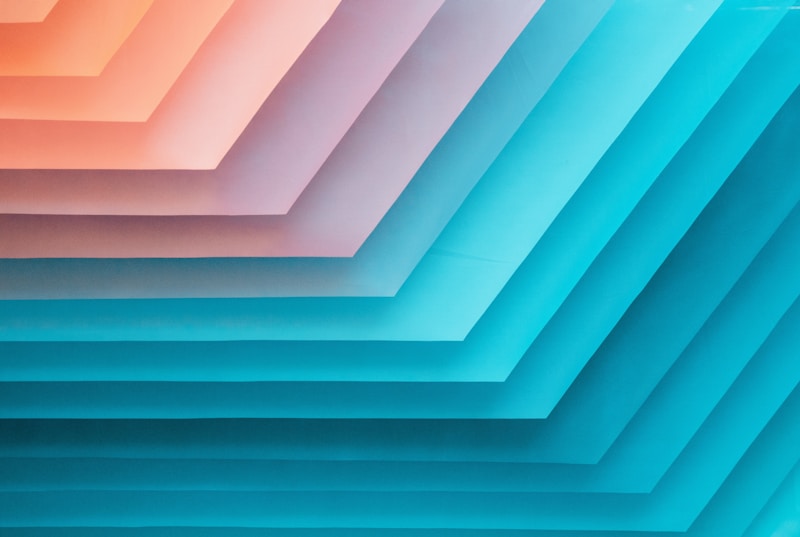Unlock the Versatility of Layered Fabric Techniques: A Comprehensive Guide
Introduction to Layered Fabric Techniques
Layered fabric techniques are revolutionizing the world of fashion and textiles. These innovative methods not only enhance the aesthetic appeal of garments but also improve functionality and comfort. In this article, we will delve into various layered fabric techniques, their applications, and tips on how to leverage them in your creative projects.
What Are Layered Fabric Techniques?
Layered fabric techniques refer to the practice of using multiple layers of fabric to create depth, structure, and visual interest in garments and textiles. This approach can be applied in various contexts, including fashion design, quilting, and home décor. The beauty of layered techniques lies in their versatility and the unique textures they can produce.
Types of Layered Fabric Techniques
| Technique | Description | Applications |
| Appliqué | Attaching a piece of fabric onto another fabric to create designs. | Fashion, quilting, home décor. |
| Overlapping Layers | Placing one layer of fabric over another for texture. | Dresses, skirts, outerwear. |
| Frayed Edges | Allowing edges of fabric to fray for a rustic look. | Casual wear, accessories. |
| Patchwork | Sewing together various fabric pieces to create a larger design. | Quilts, bags, home textiles. |
| Mesh Layering | Incorporating mesh fabrics for transparency and airy feel. | Sportswear, evening gowns. |
| Ruffles and Pleats | Creating volume and movement through gathered fabric. | Dresses, blouses, curtains. |
How to Implement Layered Fabric Techniques
Now that we have an overview of various layered fabric techniques, let’s explore how to effectively incorporate these styles into your work. Here are some practical tips:
1. Choose the Right Fabrics
The choice of fabric is critical in layering. Consider fabrics with different weights, textures, and finishing, as they will interact uniquely when layered. For instance, layering a lightweight chiffon over a sturdier cotton can create a stunning effect.
2. Color Coordination
Colors play a significant role in the success of layered fabric techniques. Use complementary or analogous colors to ensure that the layers work harmoniously together. Experimenting with different color combinations can also yield eye-catching designs.
3. Experiment with Textures

Mixing fabrics with varying textures can add depth and interest to your design. Consider combining smooth, matte fabrics with textured ones like lace or corduroy to create a sophisticated look.
4. Pay Attention to Silhouettes
Layering can significantly impact the silhouette of a garment. Make sure to consider how each layer will affect the overall shape. Adding structure through tailoring can also enhance a layered design.
5. Utilize Visual Lines
When layering fabrics, consider the visual lines created by the design. Vertical and diagonal lines can elongate the appearance, while horizontal lines may add width. Be mindful of how these lines guide the viewer’s eye.
Popular Uses of Layered Fabric Techniques
Layered fabric techniques are employed in various sectors, including fashion, interior design, and even costume design. Here are some popular uses:
Fashion Design
Layering in fashion allows designers to create eye-catching garments that stand out. From ruffled skirts to multi-layered dresses, these techniques enhance visual appeal and make a statement.
Quilting
In quilting, layered fabric techniques are essential. Quilters often use overlapping and patchwork techniques to create intricate designs, maximizing both beauty and functionality.
Home Décor
Layering fabrics isn't limited to clothing. In home décor, layered curtains and textile wall hangings can add warmth and texture to a living space. Think about incorporating layered fabrics in cushions, throws, and other home accessories.
Challenges and Solutions in Layered Fabric Techniques
While layered fabric techniques offer many advantages, they can also present challenges. Here are common issues and their solutions:
1. Bulkiness
Layering too many thick fabrics can result in a bulky garment. To avoid this, stick to lightweight materials for the top layers and reserve heavier fabrics for the backing or lining.
2. Unwanted Fraying
When using frayed edges, it’s important to prevent excessive fraying that can compromise the material’s integrity. Use fray check solutions or employ stitching to secure edges while still maintaining the desired look.
3. Sewing Difficulty
Working with multiple layers can be tricky when sewing. To ensure smooth sewing, use a walking foot or increase your stitch length to accommodate for the thickness of the fabric layers.
Conclusion: Embracing Layered Fabric Techniques
Layered fabric techniques offer endless possibilities for creativity and design. By understanding different techniques and how to effectively implement them, you can elevate your projects, whether in fashion, quilting, or home décor. Remember to choose the right fabrics, focus on color and texture, and consider the overall silhouette. As with any technique, practice makes perfect, so don’t hesitate to experiment and push the boundaries of your creativity.
In summary, embracing layered fabric techniques can transform your designs, making them visually captivating while offering practical functionality. Whether you are a seasoned designer or a DIY enthusiast, integrating these techniques can lead to exciting new creative opportunities. So, gather your fabrics and let your imagination run wild!